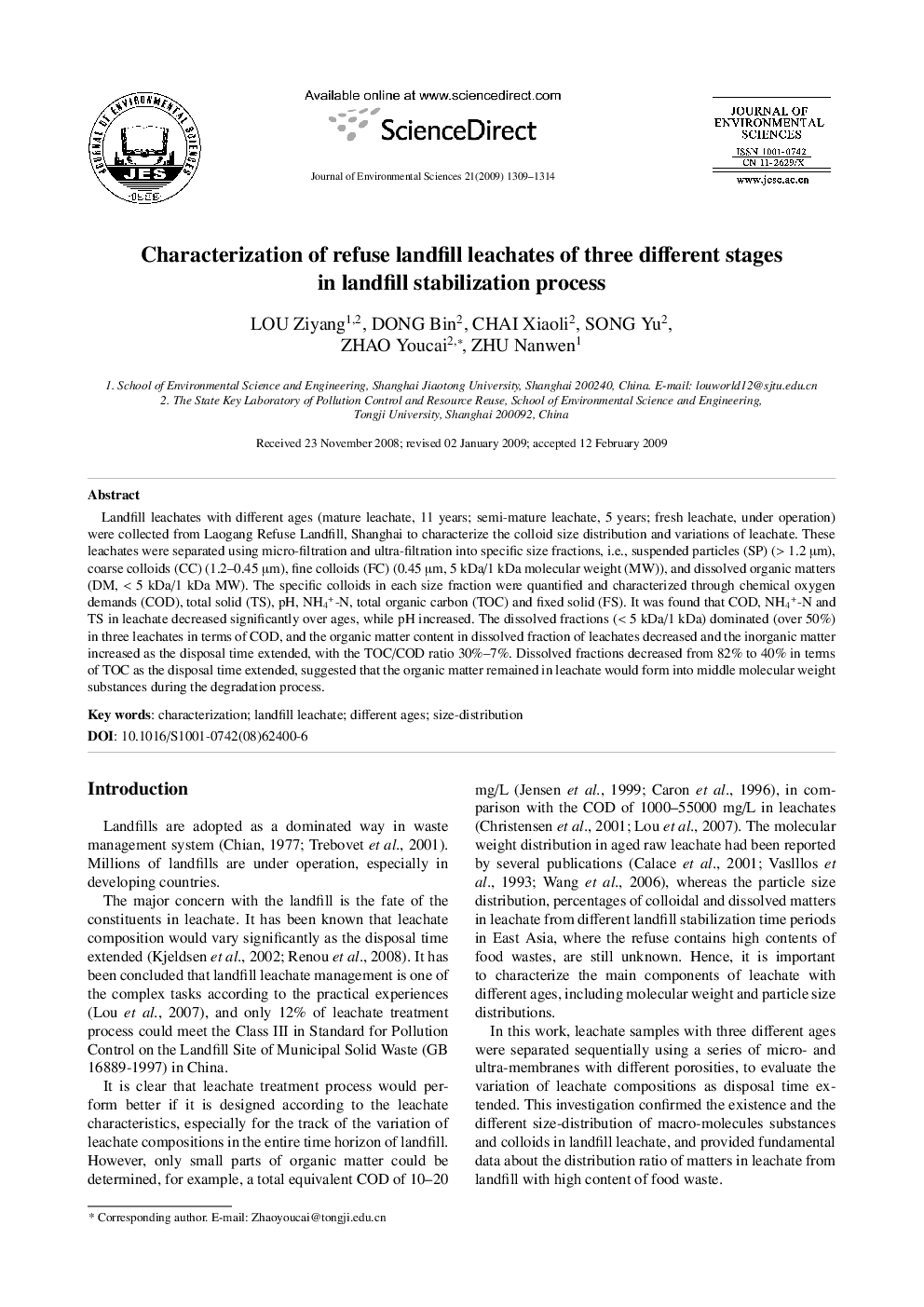| Article ID | Journal | Published Year | Pages | File Type |
|---|---|---|---|---|
| 4456158 | Journal of Environmental Sciences | 2009 | 6 Pages |
Landfill leachates with different ages (mature leachate, 11 years; semi-mature leachate, 5 years; fresh leachate, under operation) were collected from Laogang Refuse Landfill, Shanghai to characterize the colloid size distribution and variations of leachate. These leachates were separated using micro-filtration and ultra-filtration into specific size fractions, i.e., suspended particles (SP) (> 1.2 μm), coarse colloids (CC) (1.2–0.45 μm), fine colloids (FC) (0.45 μm, 5 kDa/1 kDa molecular weight (MW)), and dissolved organic matters (DM, < 5 kDa/1 kDa MW). The specific colloids in each size fraction were quantified and characterized through chemical oxygen demands (COD), total solid (TS), pH, NH4+-N, total organic carbon (TOC) and fixed solid (FS). It was found that COD, NH4+-N and TS in leachate decreased significantly over ages, while pH increased. The dissolved fractions (< 5 kDa/1 kDa) dominated (over 50%) in three leachates in terms of COD, and the organic matter content in dissolved fraction of leachates decreased and the inorganic matter increased as the disposal time extended, with the TOC/COD ratio 30%–7%. Dissolved fractions decreased from 82% to 40% in terms of TOC as the disposal time extended, suggested that the organic matter remained in leachate would form into middle molecular weight substances during the degradation process.
